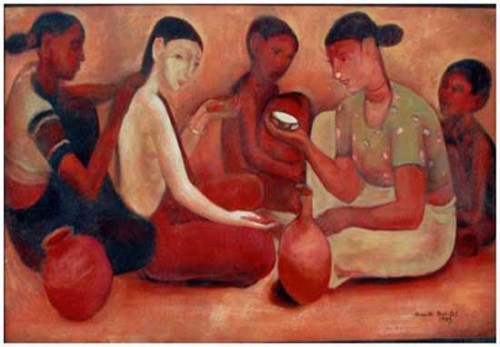When crimes against women increasingly make shocking headlines and figures citing how different crimes against them are rising all the time, one explanation most readily given is that it is a time of transition, or even confusion. India, we hear, is a modernizing, young nation though large sections remain conservative, patriarchal, reluctant to change. And so even as there are increasingly more numbers of women in the work force, for example, there is at the same time, a worrying level of violence against them.
Quite inevitably the woman is blamed for the crime: for instance, she did not dress well, an argument heard most often; or that she was not ‘behaving well’, or that she should have known better than to be in an ‘unsafe’ place at ‘that’ time. A sting operation some months ago, carried out by a newsmagazine quoted several police officers in Delhi saying precisely this. And yet there is a confusion. True, ‘inviting’ images of women on billboards, and advertisements, or for example, suggestive lyrics that recent film songs carry must not be associated in any case with the reality of life unfolding on the streets, where women will travel to work and study, live safely even in their homes; they will dress in a manner comfortable and yet being in Indian streets, wisely.
But does this obvious truth require a certain level of understanding, enlightenment and intelligence? Especially the kind vital to confront the invasive presence of every kind of media and technology influence on our lives today. Every second almost, we are bombarded by several and more flickering inviting images, and these never linger for long on our short-lived attention spans and yet leave behind certain definite impressions. Already research has established that the Internet has to an extent ‘rewired’ our brains, its changed the way certainly we think things or even memorize them. Why bother to be certain about things, when there is Google search , and so its Google that is the only certainty.
Another explanation of course is that women will have different selves, to be whoever she is at different points just as it is with a man too. And both such freedoms have to be respected and in no account must be violated. One can be a different person with different people – and we all know this. We do not behave the same way as we do at home, and in office; among friends or in a busload of strangers, with children and with partners. We wear such different selves with ease.
But the age of modern technology has split us into more ways than was even earlier possible. So now we have our virtual selves and our online one too and these could be the same and not so same and then quite different from our real selves. There is a ‘self’ we will be on Facebook, when chatting or sending out an sms, one that can be forthcoming, bold, adventurous and then a real self, quite different or not really so. Every one of us now has different selves, we are all split at different levels, and sometimes in an effort to figure this out, we become strangers to ourselves, and to one another. Maybe this is worrying, or perhaps even a challenge. But specifically, a young woman, or even an older one could gyrate to the new Kareena Kapoor number in Dabangg II, – in her imagination, in her privacy, or as her virtual self as visible on a Facebook update and still be her own real self. She must be free to be so and must not be misunderstood as holding out a certain ‘invitation’. And this example works in other instances and for other examples too. The danger or tragedy is, if at a certain stage, we no longer understand all our different selves or are totally confused about these.
Anu Kumar’s most recent novel for older readers, ’It Takes a Murder’ ( http://www.hachetteindia.com/TitleDetails.aspx?titleId=32055) releases this month and is published by Hachette India. More details of this book and her other books and writings are at anukumar.org






